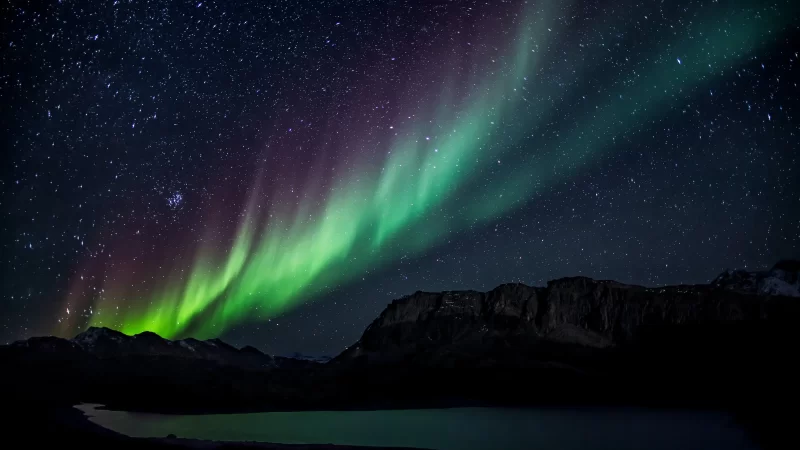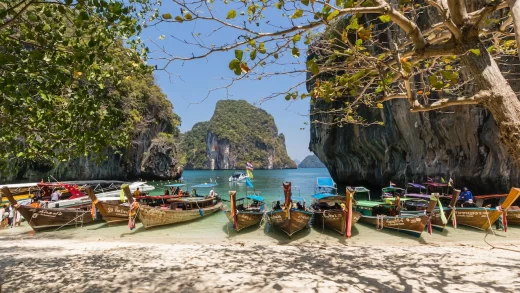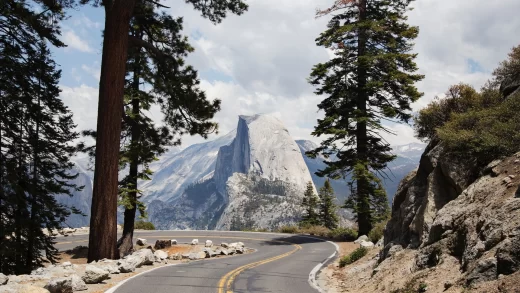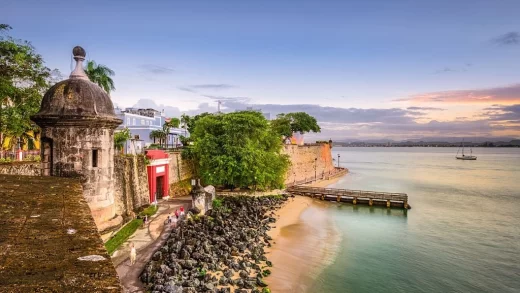Best Time To See Northern Lights In Alaska | Month, Time & Guide

Best Time To See Northern Lights In Alaska: Do you want to know the perfect time to go to Alaska and see the northern lights there? Are you interested in learning when to visit Alaska to view the Northern Lights?
Do you want to know whether Fairbanks, Alaska has a chance of seeing the Northern Lights? Or continue reading if you want to know when September is the ideal month to observe the northern lights in Alaska.
Here, we go into the specifics of excellent viewing opportunities as well as information on when and where to observe the northern lights in Alaska.
When Is Best Time To See Northern Lights In Alaska?
You may be wondering when is the best time to visit Alaska and when you might view the Northern Lights there.
The ideal time to see the Northern Lights in Alaska is from the middle of September until the beginning of April.
The long, dark evenings at that time of year make it simpler for Alaskans to observe the northern lights.
Despite being more difficult to observe during the Midnight Sun, the northern lights may be seen in all four seasons of the year.
You may believe that September and October are the finest months to observe the Northern Lights in Alaska.
While bright skies are less frequent in September and October than they are in the spring, the previous few years have seen some stunningly vivid displays. The temperature is still warm throughout these months.
Is October the ideal season to visit Alaska, then? Autumn is extremely brief in Alaska with the fast-reducing daylight hours, meaning temperatures swiftly begin to plummet.
Mid-September marks the start of autumn, which ends a few weeks later. The animals go into hibernation in large numbers as well.
Waterbodies won’t be frozen during this time of year, so you may be able to see the aurora above and reflected on the surface, creating breathtaking vistas and amazing photos!
Snow is often present in October, although it may sometimes wait until November. The chilly weather and snowfall start to arrive in the months of November and December.
One of the finest times to observe the northern lights coincides with when you may engage in traditional winter pursuits like dog sledding and snowshoeing.
As the nights become longer, you have more hours for prospective sightings, but a greater likelihood of snow also means more potential cloud cover.
This makes the winter one of the greatest seasons to visit Alaska and one of the best times to observe the Northern Lights in Alaska.
Many people agree that the greatest time to visit Alaska is from January through March. Are they, however, the greatest times to see the Northern Lights in Alaska? Yes!
One of the finest times to view the Northern Lights in Alaska is during these two months, but keep in mind that temperatures through February may drop as low as -20 degrees Fahrenheit, so you should dress warmly from head to toe.
Recommended: Best Time To Visit Iceland
If you’re traveling to Alaska in the winter, keep in mind that January begins very darkly, but that by the end of February, there will be more than 12 hours of daylight each day.
Due to the several villages hosting enjoyable winter “cabin fever reliever” events, it’s one of the greatest seasons to visit Alaska and see the Northern Lights in Alaska.
Alaska has excellent snow for winter activities and enough darkness for tourists to observe the Northern Lights.
Temperatures start to rise as March gets underway, and because the bulk of the season’s snowfall has already occurred, we often get a lot of clear evenings.
Although it may not be the ideal time to view the northern lights in Alaska, this may be a fantastic chance to do so.
However, the month of March has tremendous snow, longer days (12 to 15 hours), and warmer temperatures (the 20s and 30s).
On the first Saturday in March, the Iditarod sled dog race begins. Some individuals believe that March is the ideal month to go to Alaska and see the Northern Lights there due to all of these factors.
Reasons | Why March Is Good, But Not The Best Month To See Alaska’s Northern Lights
The drawback of searching for the Alaskan Northern Lights in March is that you will need to stay up longer because of the increased amount of daylight.
Therefore, if you want to stay up late or don’t mind getting out of bed, March may be the ideal month to observe the Northern Lights in Alaska.
Is October A Good Month To See The Northern Lights In Alaska?
October is a transitional month for holidays and trips to Alaska. Wintertime pleasure has not yet started, but summertime thrills are over.
Days are shorter, and it may be chilly, wet, or even snowing outside! After a salmon-run-filled summer, bears are getting ready for hibernation.
You may witness beautiful autumn colors, but only until mid-month, since the leaves fall rapidly! Even if October isn’t the ideal month to go to Alaska, there are still some positive aspects:
- In October, Alaska’s summer tourists will no longer be there, leaving you alone in the wilderness. As long as the pathways are free of snow, this time of year is excellent for trekking.
- Alaska in October is an excellent time to observe the northern lights before it gets too chilly!
- Exit Glacier in Kenai Fjords National Park and Mile 30 in Denali National Park are still accessible.
- Alaska has several wonderful museums that you may visit if the weather is too chilly.
- This time of year is excellent for trout and steelhead fishing.
Recommended: Best Time To Visit Hawaii
When Is The Best Time Of Day In Alaska To See The Northern Lights?
Because you can’t view the Northern Lights during the day in Alaska, the ideal time of day to observe them is at night.
With various periods of the year having more daylight than others, it is vital to know that the ideal time of the day to observe the northern lights is between 9:30 pm and 1 am.
Nature prefers to follow her own timetable, therefore it is impossible to forecast how long the aurora will last. It may last longer than that.
With that stated, find out more about our Alaskan Northern Lights Adventure in Fairbanks, Alaska, if you want to view the northern lights for yourself.
When In Alaska Is The Best Time Of Night To See The Northern Lights?
In Alaska, the hours between 10 p.m. and 2 a.m. are always your best bet for viewing the northern lights.
Although that is the greatest time to view the northern lights in Alaska, you may not want to stay up all night hoping to get a glimpse of them.
Fortunately, on our Northern Lights Ecotour, our Aurora guide spends the whole night keeping an eye on the sky for you.
We keep an eye on the predictions for solar activity, watch the sky, and send out alerts if the Aurora Borealis occurs.
Recommended: Best Time To Visit Costa Rica
Alaska’s Best Time Of Year To See The Northern Lights
The greatest months to watch the northern lights in Alaska are the months that are closest to the winter solstice because of the shorter days.
Although auroras may be seen between September and April owing to adequate darkness in the night sky. Alaskans may see the Northern Lights around this time.
What Time Of Day Is Best To See The Northern Lights?
The most critical element to observing the Northern Lights is darkness. Contrary to common misconception, Alaska’s winters are not completely dark.
Even the shortest day of the year (December 21) contains three to four hours of grey/blue light, making the Northern lights undetectable to the unaided eye even if the sun does not rise beyond the horizon for much of the winter.
The Northern lights may, however, be seen at any time of day when complete darkness has fallen, sometimes as early as 4 p.m. and as late as 6 p.m.
But 9:30 p.m. to 1 a.m. is when you have the highest chance of seeing the Northern Lights. Decide when is the ideal time to visit Alaska by considering how the darkness affects aurora viewing.
Why Do The Northern Lights Exist?
The Northern Lights, which are only seen when the sky is fully black, are really auroras, which are brought on by the sun.
When the sun is active, it sends particles and energy toward the earth, where they combine with chemicals in our atmosphere to produce the stunning light shows we see in the sky.
The length of the sun’s solar cycle lengthens and the number of sunspots on the sun’s surface rises every 10 to 12 years.
More sunspots on the surface of the sun lead to more solar flares, which release more energy into space and increase aurora activity for our viewing enjoyment.
The solar activity cycle of the Sun should be kept in mind if you want to know when it’s ideal to go to Alaska or observe the Northern Lights there.
The sun experiences a Solar Maximum (a period of maximum solar activity) every 11 years, which is followed by a Solar Minimum (a time of lowest solar activity). The Solar Maximum is when you have the highest chance of seeing the Northern Lights.
The greatest time to go to Alaska to see the Northern Lights is during the two to three years before and following a Solar Maximum, when the Northern Lights are most active and increase in frequency and intensity.
What Are The Best Situations To View The Northern Lights?
Finally, clear skies and no clouds make it easier to observe the Northern Lights.
Yes, sometimes you may see the Northern Lights if the aurora is active and the cloud cover is thin, but the greatest conditions for seeing the Northern Lights in Alaska are when the sky is dark, cloud-free, and active.
When Will Alaska Experience The Northern Lights?
When are the Northern Lights visible in Alaska? Continue reading to find out more about when to view the Northern Lights in Alaska and the best months to observe them.
Where In Alaska Can You See The Northern Lights The Best?
In Fairbanks, Alaska, are the Northern Lights visible? The greatest location in Alaska to see the Northern Lights in Fairbanks.
The city is a top spot for seeing the aurora borealis due to its closeness to the Arctic Circle and excellent infrastructure (airports, hotels, restaurants, etc.).
While locals and tourists may regularly see the northern lights from town, many hotels and tour companies have guests leave the city to obtain a better view of the amazing aurora borealis.
We’ve chosen to stay at two lodges that are 10 miles outside of Fairbanks and away from the light pollution of the city.
We never have to go far to view the lights because of their position, which makes them look bright in the sky on clear evenings.
Even more practical is the fact that as the lights start to show, our aurora guide will awaken you so all you have to do is roll out of bed, throw on some warm clothing, and go outside the lodge to enjoy it all! Even better, they can take pictures of you or of you being taken!
Will I Get To See The Northern Lights?
Since it’s a natural phenomena, we cannot promise that you will see the lights, but the chances are in your favor.
Northern Lights Cannot Be Predicted
Due to minute solar particles that reach the Earth’s atmosphere, you may see the northern lights. Brilliant lights are created when solar particles interact with gases in the atmosphere of the Earth.
The sad aspect of the situation is that, although you may be able to forecast the ideal months to see the northern lights in Alaska, you may not be able to anticipate the precise optimum times to do so.
The good news is that because we have almost always seen the aurora borealis on our travels, our guides are among the best at determining when it is the greatest time to view the Northern Lights in Alaska.
When Are The Northern Lights Visible In Alaska?
The sun’s activity is what causes the northern lights, and because the sun is now close to solar minimum, there is less probability than during solar maximum that a full-blown auroral storm will occur.
However, daily displays of the northern lights will continue until the 2024 solar maximum return period.
Finding clear skies and being aware that they signal the greatest chance to observe the northern lights in Alaska are the true challenges.
So When Are The Northern Lights Seen In Alaska?
What time of year is ideal for seeing the Northern Lights in Alaska?
Due to Earth’s tilt with respect to the sun, the magnetic field of Earth and the solar wind are in phase during the equinox months of September and March, which tends to enhance displays of the northern lights.
March in an inland location is probably the greatest time to observe the northern lights in Alaska due to the combination of these factors plus a greater likelihood of clear sky during the spring months.
In Alaska, Is It Possible To See The Northern Lights In September?
It combines a number of elements:
- Location
The region surrounding Fairbanks is noted for its regular views of the northern lights and is located close to the Arctic Circle. Outside of the city, the sky are black, making them simpler to
The possible viewing period for northern lights is six nights. The likelihood of viewing the aurora increases the longer time you stay in and around Fairbanks throughout the winter.
In fact, as long as the sky are bright, the northern lights may be seen here four out of every five evenings throughout the season.
- Night Watch
We have a night watch guide on duty in addition to our day watch guides to keep an eye out for the lights. He or she will wake you up with a text, call, or knock on your door so you won’t miss them whenever they arrive in the sky.














